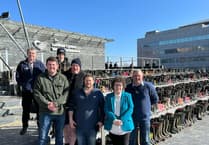A Which? report has found that Ceredigion is one of the worst local authority areas for broadband speeds in the whole of the UK.
Which? analysed speed checker data in local authority areas across the UK to determine the best and worst broadband connections in the country.
The data suggests that Ceredigion was one of the worst affected local authority areas with an average speed of 7.5mbps.
Commenting on the research published by Which?, Russell George, Montgomeryshire AM and Shadow Minister for the Economy & Infrastructure, said: “The findings from the Which? research confirms that Ceredigion remains one of the worst local authority areas for broadband connectivity in the UK.
"This is disappointing, especially after the Welsh Government has sought to intervene through its Superfast Cymru programme to deliver high speed broadband to 95 per cent of premises in Wales.
“It is right to say that Superfast Cymru has delivered fibre broadband to those who would have never received it without public intervention but over £425 million has already been spent on phase one of Superfast Cymru so you would expect rural areas of Wales to be performing better when it comes to broadband speeds and connectivity.
“I would encourage everyone to check with their provider or use the Which? free speed checker or switching tool to see if they can benefit from upgrading their connection or switching to an alternative provider, but in the majority of cases it is ongoing infrastructure issues rather than consumer choice which prevents those in rural areas of Wales such as Ceredigion or Powys from accessing high-speed broadband.
“While it is welcome news that phase two of Superfast Cymru has recently been announced by the Welsh Government, it is beyond me why it’s taken the best part of a year for them to award this contract to Openreach.
"There should have been a seamless transition between phase one and two of the scheme but almost a year has gone by and this has clearly added to the frustration of people who remain without any broadband at all, not alone high-speed broadband.
“Questions still remain about phase two, including exactly how many premises are going to be provided with fibre broadband, what type of connections will be used for the rollout, what timescale will they be working to and how many premises will remain stranded and without high speed broadband after phase two concludes.
“Broadband is now considered the fourth utility, is an essential part of modern life and is no longer a ’nice to have’ luxury. We must do all we can to guard against a situation whereby the digital divide between the urban ’haves’ and the rural ’have nots’ widens further, damaging the rural economy of Wales.”




